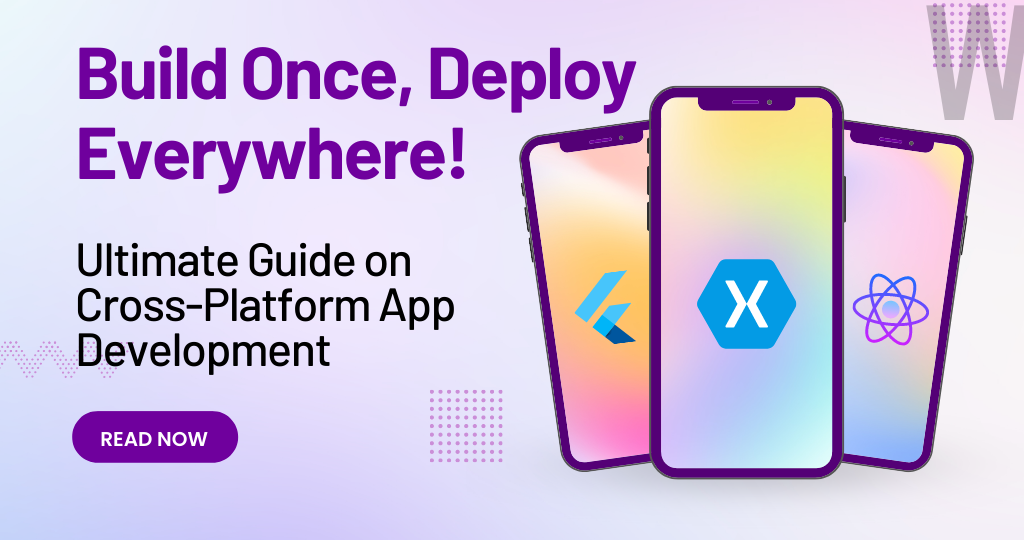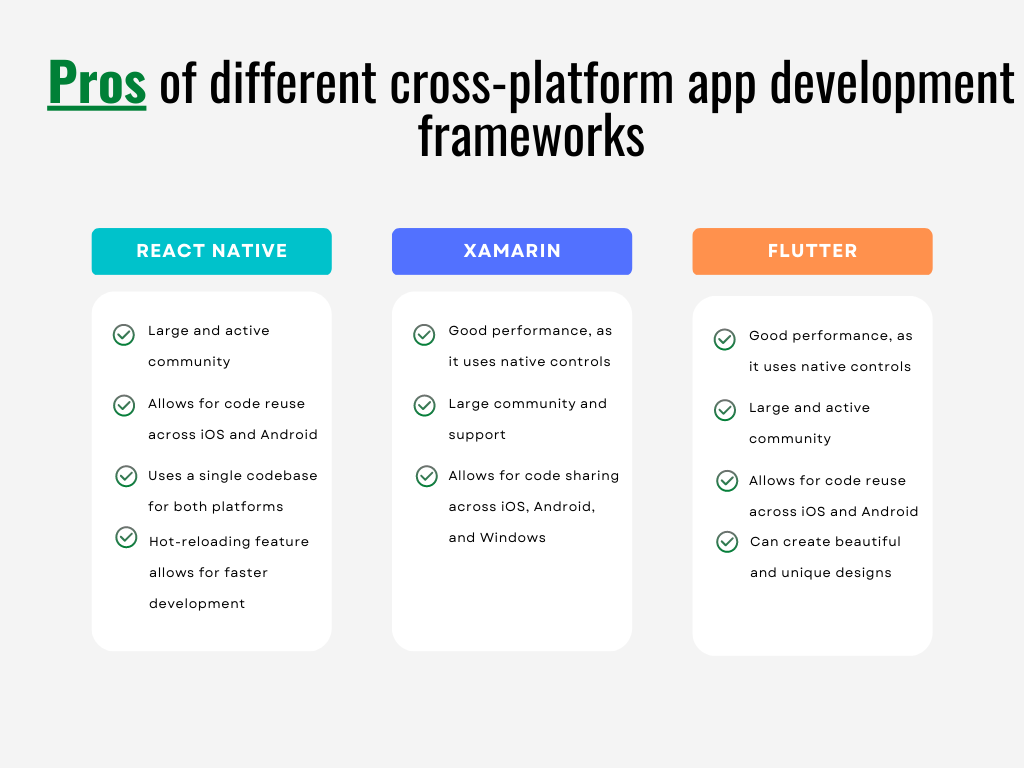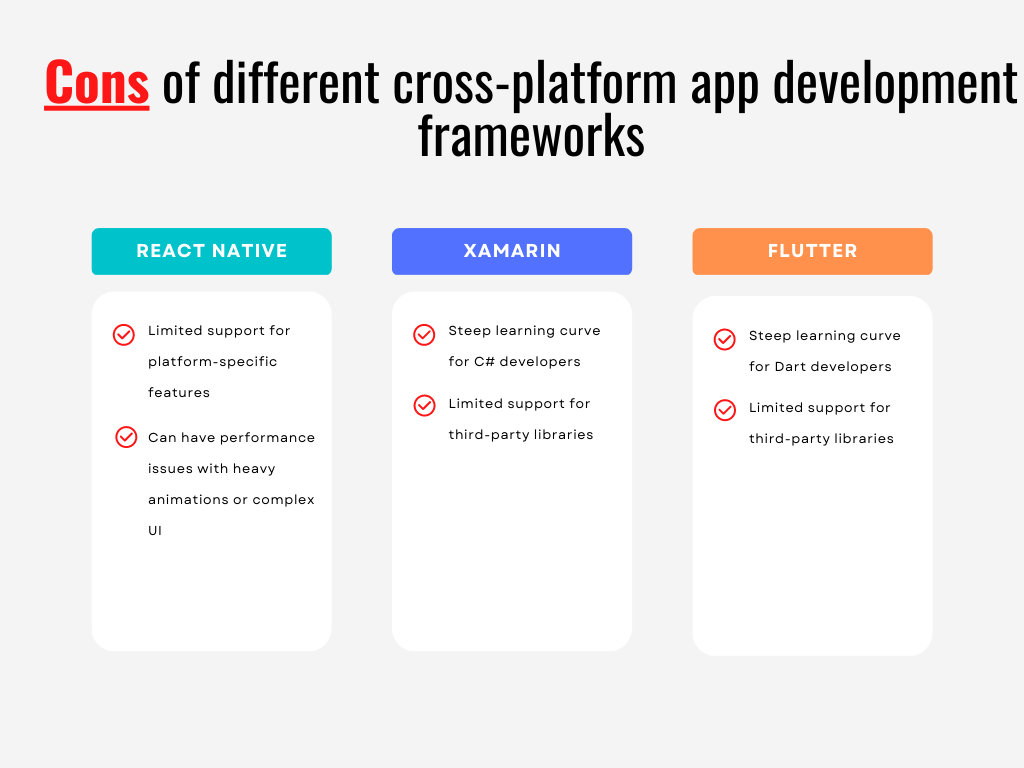Build Once, Deploy Everywhere: The Complete Guide to Cross-Platform App Development

Introduction
Many firms in huge industries now require mobile apps. To remain competitive, businesses must create mobile applications for their consumers and staff that are available on both the Android and iOS platforms. Each company selects whether to create two programs for each operating system or to employ a cross-platform solution.
Aside from aligning the primary features and adhering to the client’s expectations, one of the obstacles that a development business encounters when establishing an app is multi-platform app development. Developers are well aware that it is easier said than done.
Android apps account for more than 74% of the mobile market, with iOS accounting for around 24%.
In this post, we have outlined the benefits and problems of cross-platform mobile app development and compiled a list of the best cross-platform frameworks of importance in 2023. It is the age of cross-platform app development, and organizations that create cross-platform apps, like Way2Smile solutions who is predominantly a mobile app development company in India, will pave the way forward in cross-platform as well.
The current market for mobile app development services
IoT is pushing the app market forward. It enables the capture of massive amounts of data that may be used for optimization and integration. In cross-platform mobile app development as well, a consistent and substantial revenue increase has been observed in existing markets in 2023.
The adoption of numerous gadgets and the growing need for the eCommerce business is among the top drivers of mobile app market trends. The continued expansion of enterprise apps is moving both the Android & iOS platforms forward and boosting the demand for developers to meet their mobile app development needs.
Consider the following statistics:
- According to a Grandview study, the mobile app market size was $187.58 billion in 2021 and is expected to rise at a CAGR of 13.4% from 2022 to 2030.
- Americans spend 88% of their time checking their phones and consuming mobile apps.
What Is Cross-Platform Mobile App Development?
The idea of cross-platform app development allows organizations to reach as many customers as possible by developing software that runs across a variety of operating systems. In this development strategy, a wide range of users can access apps that are compatible with all digital environments. Developing apps for different platforms enable developers to deploy a product significantly faster since they only have to write code once. The cross-platform app development technique saves money while maintaining application speed and quality.
Why Is Cross-Platform App Design Important?
With so many different platforms emerging at the same time, going 100% native Android or iOS is a big risk. Furthermore, coding the app and UI for each platform is time-consuming and expensive, despite the fact that they appear and function nearly identically. The solution to this dilemma is to use a cross-platform development strategy, which allows you to build an app for several platforms in the time and money it takes to build an app for one platform using a third-party software development kit.
Consider the following facts below:
- The reusability of code and databases saves development efforts and time, resulting in reduced development time.
- Having numerous apps with various backends increases the upgrade and maintenance costs.
- Cross-platform mobile app development has the ability to take a single mobile app idea and deploy it to a variety of different platforms, such as iOS and Android, without the need to start from scratch for each platform – it also allows for improvements to be made to all platforms at the same time.
- A good user experience is essential for success. Cross-platform app development allows for a consistent user interface across all platforms, resulting in higher acceptability.
Main Benefits Of Using Cross-Platform App Development
After all, why would you want to design an app that works on all platforms rather than one that just works on one? However, it is vital to investigate the benefits and drawbacks of multi-platform app development to optimize the performance of your cross-platform app, across different platforms.
Easy to maintain
If the app needs to be modified or customized, a single codebase makes it easier to deploy and maintain. All platforms and devices can be updated at the same time.
Quick prototyping
With cross-platform apps development is faster, simpler, and more effective. Here, quick prototyping can ensure that the development process is going faster and as per the pre-decided flow.
Easy to deploy
Since there is only one app that is designed for several platforms, it is significantly easy to maintain and deliver any code updates. Any changes may be distributed effortlessly across all platforms and devices. Similarly, if there is a defect or error, a common code can make it easier to fix it.
Market research
In the case of cross-platform app development, reducing time to market is simply because the development process is faster, and deployment and maintenance are faster. As the time to market decreases, the application can reach the audience faster, which can benefit your business by making your services available sooner.
Challenges In Cross-Platform App Development
However, cross-platform programming still faces significant hurdles despite its popularity and numerous benefits. If you are planning to develop cross-platform mobile apps, keep the following points in mind:
Reduced performance
Hybrid solutions combining native and non-native components might slow down apps due to the extra abstraction layer and inconsistent communication between platforms.
Poorer user experience
A single codebase must be used for both platforms, so developers cannot take advantage of platform-specific features such as enhanced graphics, animations, or 3D effects. You may achieve a better user experience, however, by focusing on important functions in your UX design. Apps that are convenient and simple to use are preferred by mobile consumers.
The update is taking its time
Cross-platform frameworks take longer to update and support new features when compared to native apps, which are updated as soon as Apple or Google introduce them. One particularly annoying issue that you won’t be able to avoid is the fact that when an update is released for a given platform, it can take some time for any changes to take effect.
Performance lack
Although your app will run well when built for all platforms using cross-platform development, it will not perform as well as apps produced natively for specific platforms.
Low-quality images
Cross-platform development produces graphics that aren’t as good quality as graphics used in natively built programs. This is due in part to the fact that you will not have access to the core OS graphics libraries. If your program is significantly reliant on visuals, you might want to reconsider cross-platform development.
Choosing the right cross-platform development tools
Several cross-platform app development tools are available due to the stability of the tech domain. Each tool has its own set of characteristics and it’s a great impact on the success of your app development project, as the right app development language and right tools can streamline the development process & ensure compatibility with all platforms. Here are the following most reputed cross-platform development tools:
Apache Cordova
Cordova runs on Node.js and is available on NPM. Reusable code, offline support, and access to native device APIs are just a few of the features found in the popular cross-platform development framework. For app creation, Apache Cordova makes use of JavaScript, CSS, and HTML5.
Xamarin Inc.
Xamarin is a cross-platform development framework owned by Microsoft. Apps created using Xamarin provides conventional, native user interface controls. Apps not only look and perform the way the end user expects them to – Xamarin also deconstructs cross-platform activities such as the generation of dynamic layouts for iOS.
Native Script
It allows the developer to effortlessly construct programs for the Apple iOS and Android platforms by utilizing their native user interfaces and libraries. The best feature of this framework is that it allows developers to use most JavaScript libraries that do not require internet access.
Sencha
Among its tools are Sencha Architect, Sencha Animator, and others. It is a JavaScript framework or library designed exclusively for the Mobile Web. EXT JS, GXT, and Sencha Test are among the Sencha product tools. EXT JS, a full JavaScript framework with a robust UI component library that lets developers swiftly construct and simply manage data-intensive, enterprise online and mobile apps, remains the most popular.
Appcelerator
The platform has a lot of features that help developers create apps quickly, and it also has an optional virtual private cloud option for businesses that manage sensitive and private data.
Kony AppPlatform
It is a low-code development framework with little development trouble. In Kony, designers and developers can work faster with a visual design canvas and tools. Users have the option to create spectacular user experiences by utilizing the entire native OS, and third-party frameworks.
RhoMobile Suite
RhoMobile Suite is another open-source framework for developing data-centric and native mobile apps. The fact that this framework supports automated data encryption distinguishes it from other cross-platform development tools.
Corona
Corona claims that their software development kit allows you to begin writing your new app in less than five minutes. So it’s reasonable to state that this cross-platform development tool doesn’t have a steep learning curve.
Except for your time, you will not have to invest anything. Corona’s principal application is in 2D games. It’s ideal for high-quality visuals and may help you create games far faster than if you were to code the entire app from start. They choose Lua because they realized that language works well with mobile apps because it has a small digital footprint.
React Native
Facebook developed React Native, an open-source program. React Native has swiftly established itself as one of the leading alternatives for app developers.
The wonderful thing about React Native is that it can be used for things other than mobile apps. It may be used to construct native apps for web apps, Windows, UWP, tvOS, macOS, Android TV, and more platforms. As a result, react native truly is a cross-platform and cross-device solution.
Pros and cons of different cross-platform app development frameworks
Cross-platform app development frameworks provide a way for developers to build apps for multiple platforms, such as iOS and Android, using a single codebase. This can save time and effort compared to building separate apps for each platform. However, each framework has its own set of pros and cons. In this infographic, we will compare the most popular frameworks, React Native, Xamarin, and Flutter, and highlight their strengths and weaknesses. This will help you make an informed decision about which framework to use for your next app development project.


Tips for designing a cross-platform app that works well on different platforms
When developing cross-platform apps, you must consider a few factors. We’ve included a few pointers on how to manage cross-platform programming properly below.
Conduct extensive research
In-depth market research will offer you significant insights into app user demands as well as a credible cost estimate for the project. Market research will also reveal the techniques your competitors are employing to tackle user concerns.
While conducting market research, keep the customer in mind and create cross-platform software that addresses the user’s pain points. Good market research is always beneficial when developing a feature-rich cross-platform app, whether it is an MVP or a full-fledged app.
The app should be appealing
The appearance and feel of the app is the first thing that will draw consumers in. An aesthetically pleasing app would help to increase user engagement. Different schemes and fonts are used by iOS, Windows, and Android. To guarantee that the program runs effectively, you must specifically adjust each of these typefaces.
Utilize a platform-independent app development strategy
Many developers believe that while developing for several platforms, there is no need to address platform-specific interface standards. This is a wrong approach because some features are unique to Android while others are unique to iOS. The best app developers will understand what iOS consumers and Android users want from an app. A decent cross-platform program should be simple to use and precisely aligned with each type of platform.
Utilize pre-assembled components
You may minimize production time and increase quality and performance by incorporating one of the ready-made modules into your app development project.
If your app developers have previously produced a solution comparable to yours, they will have many of the pre-made components required to build a cross-platform app.
Reduce network access by using local caching
With certain hybrid frameworks, developers can improve app speed by keeping data in local storage or rendering data through a cache. When developers use local storage for caching, they can significantly minimize server calls and network queries. The software performs smoothly since the pages are promptly loaded from the cache.
Carry out rigorous testing
Before releasing it to the market, make sure that every component of the software is up to par, including the design, loading speed, and performance. A good cross-platform app development business will have a solid testing method in place to assist them to offer a high-quality app.
Cross-platform transition
Cross-platform app development has decreased the cost of developing mobile apps. When efficient teams interact, great things happen. This is also true for cross-platform software development. To create a superb cross-platform app, work with a good cross-platform app development business.
Conclusion
Cross-platform applications are transforming the app development experience. It is continually pushing the frontiers of development while simplifying the entire process. Cross-platform applications are the best option for enterprises that need broad coverage with cost-effective and quick-turnaround solutions. It is up to you to select the best framework and engage with the best development partner. Cross-platform solutions work well.
Cross-platform development is undoubtedly a developing trend with promising future prospects. Although large organizations such as Google and Facebook are major drivers of technology, demand from private enterprises is equally important in the adoption of the cross-platform approach to mobile application development. The advantages of utilizing this technique in application development outweigh the downsides.
Hiring an established cross-platform mobile app development business can better guide you and make the best selection for your company as to which framework would best suit your organization. When seeking a cross-platform app development firm, it’s vital to consider the company’s proficiency and background and find a prolific android app development company in India that meets your requirements.
FAQs on Cross-Platform App Development
Native development produces high-performance programs, but they might be expensive to build. Cross-platform development is an excellent choice if you have a limited budget to work with.
Sign up for free
Go to the browser home page live.
You’ll then view the device-OS dashboard.
Using the menu options, upload your own app.
When you click on the device, the selected operating system will be loaded on a real mobile device.
Choose the platform on which you wish to release your app—there are numerous alternatives, including iOS, Android, Windows, Linux, and macOS.
Each one has distinct requirements, so read up on them before beginning the procedure.
Your software will be available for download on the app store after it has been authorized.
Spread the word about your software! Make sure people are aware of its existence by informing them online, in person, or through advertising. For example, Smart IDE assists you in making things easier by providing an environment in which you may make adjustments to the build process.


